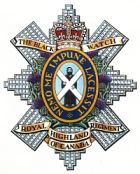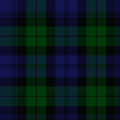| The Black Watch (Royal Highland Regiment) of Canada | |
|---|---|
 Cap badge of the regiment | |
| Active | 31 January 1862 – present |
| Country |
|
| Branch | Canadian Army |
| Type | Line infantry |
| Role | Light role |
| Size | Battalion |
| Part of | 34 Canadian Brigade Group |
| Garrison/HQ | Black Watch Armoury, 2067, rue Bleury, Montréal (Québec) |
| Motto | Nemo me impune lacessit (Latin for 'No one provokes me with impunity') |
| March |
|
| Engagements | |
| Battle honours | See #Battle honours |
| Website | canada |
| Commanders | |
| Colonel-in-chief | Charles III |
| Honorary Colonel | Colonel Bruce Bolton |
| Honorary Lieutenant-Colonel | Lieutenant-Colonel Jonathan Birks |
| Commanding officer | Lieutenant-Colonel R.M. Unger |
| Regimental Sergeant Major | Chief Warrant Officer K. Fuller |
| Insignia | |
| Hackle | Red |
| Tartan | Black Watch (Government 1) |
The Black Watch (Royal Highland Regiment) of Canada is a reserve infantry regiment in 34 Canadian Brigade Group, 2nd Canadian Division, of the Canadian Army. The regiment is at 2067, rue Bleury (2067, Bleury Street) in Montreal, Quebec, Canada, and is currently commanded by Lieutenant-Colonel R.M. Unger. The regiment's armoury was designated a National Historic Site of Canada in 2008. [1] [2] They are the senior Canadian-Scottish Regiment.
Contents
- Lineage and history
- The Black Watch (Royal Highland Regiment) of Canada
- The 1st Canadian Highland Battalion
- The 2nd Canadian Highland Battalion
- Lineage chart
- Perpetuations
- War of 1812
- World War I
- Operational history
- Fenian raids
- Boer War
- World War I 2
- World War II
- Post-Second World War
- Alliances
- Battle honours
- War of 1812 2
- South African War
- Great War
- Second World War
- War in Afghanistan
- Victoria Cross recipients
- Pipes and drums
- Activities
- Traditions
- Cadet corps
- Music
- See also
- Order of precedence
- Notes and references
- Bibliography
- External links









